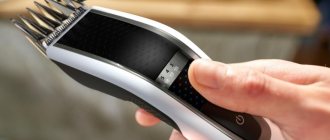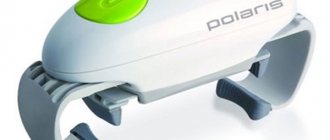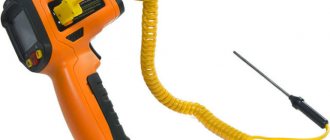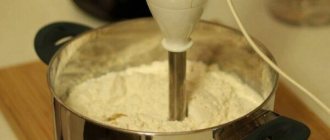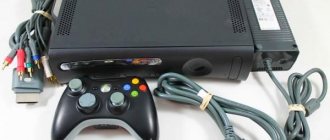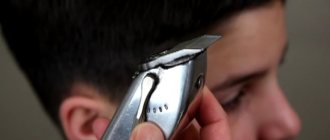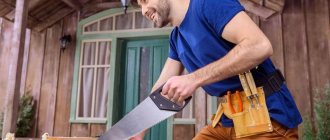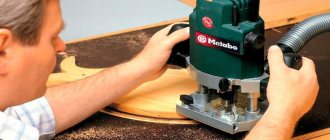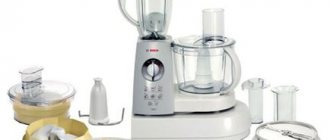What is sandpaper used for?
An emery machine is useful for the following work:
- Restoring the cutting qualities of the drill. To avoid buying new drills, you need to know how to sharpen old ones. When working with a drill, the drill gets very hot, which is why it constantly becomes dull. Once you sharpen it on a machine, you can use it many more times.
- Sharpening knives, scissors, shovels and other tools. Thanks to a homemade machine made from a washing engine, your knives will always be sharp and your scissors will cut perfectly. You don't need to use any special effort for this.
- If you replace the emery wheel with a polishing wheel, you can easily process products and parts.
Using the motor from the washing machine, you can make a sharpening machine with your own hands. To do this, you will have to buy just one part - an emery wheel. All other components are located in the motor.
Knife sharpening basics
Knives have different uses and there are even several of them in the ordinary kitchen. There is one for slicing bread and other soft foods, and one for cutting meat, chopping bones, and other hard objects. And these are just household ones. But there are also those who take them hunting and fishing. If you look closely, you will see that they all have a different sharpening angle (this is if they have not already been sharpened at home). It is the sharpening angle that is the most important characteristic, which is determined by the purpose of a given blade.
Read also: Line for the production of paper bags
A knife sharpening device will make your work much easier
At what angle
The sharpening angle is determined based on the main area of application of a particular blade:
- Straight razors are sharpened at 8-12°. Such a small angle allows you to easily cut hairs after finishing, but when you try to cut something else, the blade will become dull very quickly.
- Fillet knives are sharpened almost as sharply - 10-15°.
- To cut food, it is best to sharpen the blade at 15-20°.
If you look at the blade at multiple magnification we will see something like the following:
These are general recommendations based on many years of experience. There are, however, options: some blades have several zones with different sharpening. This makes them more versatile, but the difficulty of sharpening increases many times over.
From the above it follows that the device for sharpening knives must be able to set the required sharpening angle. And this is the main difficulty in its design and manufacture.
What to sharpen
To sharpen knives, sharpening stones of various grain sizes are used. They are conventionally divided into coarse, medium and fine. Why conditional? Because different countries have their own designation of grain size. The most convenient classification is by the number of grains per unit area. It is expressed in numbers: 300, 600, 1000, etc. Some companies also use English terms. Here is an approximate division:
- 200-250 - very rough (extra coarse). They are not used for sharpening knives.
- 300-350 - rough (coarse). Used when profiling the cutting edge of a damaged or very dull blade. If the cutting edge has no visible flaws and you do not plan to change the sharpening angle, this abrasive should not be used.
- 400-500 - medium. Many manufacturers do not have bars of this grain size, since they are easy to do without.
- 600-700 - fine. The main type of whetstones used for sharpening knives. They are used to sharpen knives that have become dull during normal use.
- 1000-1200 - very fine (ultra or extra fine). They bring the sharpened blade to a mirror shine.
Whetstones for sharpening knives are required with medium and fine grain; for finishing (polishing) you can take an even ultra-fine one
In addition to grain size, sharpening stones are also distinguished by their origin: some are of natural origin (slate, corundum, etc.), some are ceramic and diamond. Which ones are better? It’s hard to say - a matter of taste, but natural ones wear off faster and are rarely fine-grained.
Natural ones are soaked in water before use or simply moistened with it. They absorb water and, during sharpening, an abrasive paste is formed from water and separated abrasive particles on the surface, which increases the efficiency of sharpening. For the same purposes, you can use a special little (honing oil) or a mixture of water and soap (whichever you prefer). In general, you should try all these options with each sharpening stone and choose the best one.
The shape of a whetstone for sharpening knives is a block, and it is desirable that its length be much longer than the length of the blade - it is easier to sharpen. Bars with double grain are convenient - coarse on one side, finer on the other. To sharpen knives for ordinary purposes, it is enough to have two bars with medium grain (different) and two fine ones (one can be very fine).
Manual sharpening procedure
A device for sharpening knives only makes it easier to sharpen the edge, so knowledge of manual sharpening techniques is mandatory. Without them, it is impossible to sharpen a knife correctly.
The procedure for sharpening knives is as follows:
- First we take a block of medium or coarse grain - depending on the circumstances, we place it on the table. It’s better if it is secured - you won’t have to worry about not moving it while working.
- We calculate the required sharpening angle - it is equal to half the selected angle. We hold the blade at approximately this angle. Now the main task is to maintain this angle constantly.
- All movements when sharpening a knife are without strong pressure. Smoothly and evenly.
- We begin sharpening with a movement “from ourselves”. In this case, in one pass the blade must “pass” along the stone from beginning to end. There is also an important point here: at the point of contact with the block, the edge must be perpendicular to the direction of movement. There are no problems with the straight part - you drive straight, but as the rounded edge approaches, you have to turn the handle to maintain perpendicularity (see photo).
The process of sharpening a knife on a whetstone
Once again in the graph - how to sharpen a knife correctly - the movement of the blade along the block
At this point, we can assume that sharpening the knife is complete. Some people are still finishing the edge on the old belt. A piece of belt can be secured to a wooden block (glued, not nailed), rubbed with goyi paste. Then pass several times alternately with one side or the other, but turning the cutting edge back. This way the last grooves left by the abrasive are polished and the belt is not “cut” in the process.
Which engine is suitable for making emery?
Wondering what engine you can use? You can use any motor from a washing machine, even the brands “Vyatka”, “Riga” or “Volga”. The main thing is that it has sufficient power.
For normal operation of the sharpening machine, a power of 100-200 W, with 1000-1500 rpm, is enough. For particularly large parts, a 400 W motor is suitable. But if the engine speed reaches 3000 rpm, it needs to be adjusted or a very durable disc installed.
What you need to create emery from a washing machine motor
To make a simple sharpening machine you will need:
- washing machine motor;
- flange;
- sleeve;
- attachment to the electric motor (emery wheel);
- casing for protection;
- support;
- starting device.
When purchasing, it is better to choose a product with two circles: a finishing and a rough version.
You also need to make an adapter with a flange. Since the size of the shaft does not match the hole of the grindstone, an adapter must be made. It can be done on a lathe, having previously determined the dimensions and completed the drawing. On the diagram you need to mark the diameter of the shaft and the emery hole.
You can make a flange for the shaft yourself. A piece of pipe with a diameter of 32 mm, no more than 200 mm in length, will do. It should fit perfectly on the motor shaft. On one side of the flange there is a thread, the direction of which depends on the direction of movement of the shaft. When sent to the engine, the other end of the flange is heated and pressed.
After installation, be sure to secure the flange. This can be done by welding or bolting, drilling the flange with the shaft.
The shaft adapter is ready. It remains to install the element for sharpening the cutters.
Device assembly and safety precautions
After assembling the device structure, you need to install the device on the workbench. This can be done using a bracket from a washing machine. It needs to be attached to the workbench using bolts.
On the other hand, the engine rests on an angle to support it horizontally. This corner has a special cutout that matches the shape of the engine.
You can reduce the vibration of the device during operation. To do this, you need to put a special edging on the corner, made from a piece of rubber hose.
Read also: Hadfield steel and knives made from it
To comply with safety precautions during sharpening, it is necessary to make a metal casing for the device. It is made from sheet metal 2-2.5 mm thick. To do this, you need to cut a strip of metal and roll it into a half ring.
Under the abrasive stone, you need to install a piece of galvanized sheet metal, which will protect the workbench from sparks while the machine is operating.
Work on sharpening tools on homemade sandpaper must be carried out wearing safety glasses and observing all necessary safety measures.
You can make special devices for the sharpener. You need to prepare plexiglass with a thickness of 5 mm. Attach it with hooks to the motor casing. This glass should tilt 180°.
To make the work easier, you need to make a tool rest. It is necessary to support the tool being processed.
If you follow these instructions, you can make your own electric emery that will successfully process the necessary tools and will last a very long time. When operating the device, be sure to follow safety precautions.
Many business people wouldn't mind having a functional sharpening machine on hand. Equipment of this type from a good manufacturer is not cheap. It is not at all necessary to spend money on buying a new machine, since it is quite possible to make emery with your own hands, spending a minimum of money and effort.
Among the many power tools needed in the household, emery takes pride of place in demand. It will be useful in the garage for sharpening knives, in the country; will be indispensable for any craftsman.
Guided by the photo and video materials in the article, possessing the necessary set of materials and tools, and with minimal skills, you can easily make homemade emery. The design of the future machine will include: an emery stone (sharpener), a support frame, an auxiliary table, and electrical equipment.
Steps for creating emery from a washing machine engine with your own hands
For a homemade device, a belt-driven motor is useful.
All that remains is to assemble the device correctly. After installing the flange, put the nut and washer on the shaft, then a large emery wheel, and then the nut and washer again.
Motor connection
How to connect the motor from an automatic washing machine:
- Using a multimeter tester, look for the tachogenerator wires that show a resistance of 70 ohms (usually they are white). We will not use them.
- There are four wires left. Using a multimeter, you need to identify paired wires.
- Connect the wires leading to the stator and to the electric brushes. The remaining wires need to be connected to a wire and a plug at the end, and then connected to the network.
- Connections must be insulated.
Immediately after connection, the motor for home emery will start working, and you will be able to evaluate the functionality of the device.
Connecting the electric motor of Soviet-made washing machines differs from the previous version.
- Here you will find only 4 wires. We need to find pairs.
- Take a multimeter and measure the readings of each wire. You need paired wires with lower resistance that go to the working winding.
- Connect these wires to a plug and connect to the network.
- Now we need to make a trigger element. You can use any button, for example, a door lock. Connect one wire coming from the button to the starting wire (PO), and the other to the working wire (OB).
The motor is now connected. But before starting work, you need to thoroughly secure the machine to avoid an emergency.
